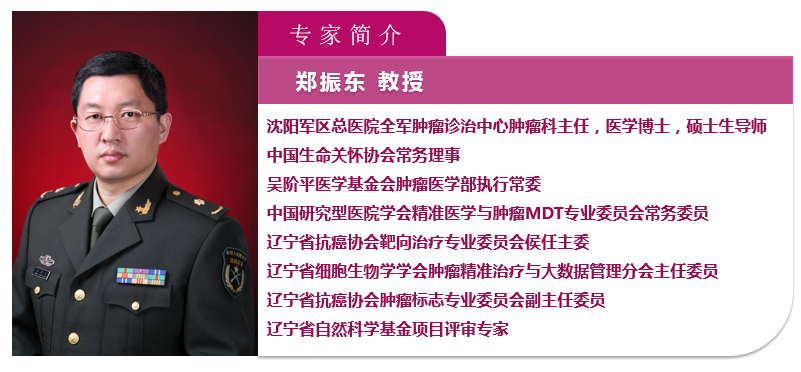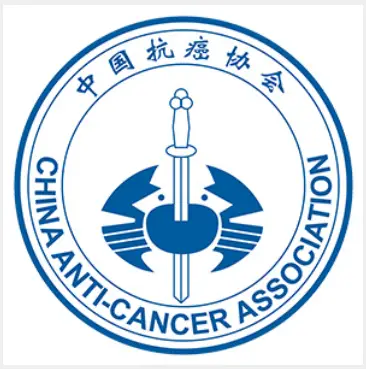1、STAMPEDE试验:准备长期接受雄激素剥夺治疗的高危前列腺癌患者加用醋酸阿比特龙可显著改善生存预后(NCT00268476)(LBA5003)
背景:阿比特龙为去势抵抗前列腺癌患者带来了生存获益。我们评估了更早应用阿比特龙治疗前列腺癌是否能够奏效。STAMPEDE研究是一项随机对照试验,采用了多组多阶段平台设计。研究入组了准备接受长期雄激素去势治疗(androgen-deprivation therapy, ADT)的高危局部晚期或转移性前列腺癌患者。我们首次报道各组生存数据的对比结果。
方法:标准治疗(SOC)是ADT治疗2年以上,N0M0患者必须接受放疗,N+M0患者鼓励接受放疗。患者随机1:1分为SOC组和SOC联合每日阿比特龙1000mg+泼尼松5mg组(SOC+Abi)。治疗持续时间取决于分期和根治性放疗意向:不准备放疗的患者治疗持续至PSA、影像学和临床进展,准备放疗的患者治疗持续2年或至出现各种进展后。首要终点为各种原因导致的死亡。生存风险比为0.75,检验效能90%,单侧α为2.5%,对无治疗失败生存期(FFS, failure-free survival)进行3次中期无获益分析时要求对照组出现267例死亡事件。采用Cox风险比例和弹性变量模型进行分析,并对分层因素进行校正。
结果:2011年11月-2014年1月共有1917例患者同时随机入组。两组间分层因素均衡可比,中位年龄67岁,52%存在转移,20%为N+/XM0,28%为N0M0,95%为新确诊患者,中位PSA 53 ng/ml。中位随访40个月。SOC组共262例出现死亡(82%因前列腺癌),SOC+Abi组184例死亡(校正后HR:0.63 [95% CI 0.52-0.76], p=0.115x10-7)。3年总生存率从76%提高至83%。SOC组共出现535例FFS事件,SOC+Abi组出现248例(校正后HR: 0.29 [95% CI 0.25-0.34], p = 0.377x10-63)。SOC组和SOC+Abi组 3级和4级不良事件发生率分别为29% vs 41%和5% vs 3%,5级不良事件分别发生3例和9例。
结论:研究结果显示ADT开始后加用阿比特龙可从临床和统计学上显著改善患者总生存期和治疗无失败生存期,阿比特龙增加的毒副反应可控。ADT(±放疗)联合阿比特龙可作为这类患者的新的标准治疗方案。
2、LBA3:LATITUDE试验:III期双盲随机对照研究对比雄激素去势治疗联合醋酸阿比特龙+泼尼松或安慰剂在新确诊未经激素治疗的高危转移性前列腺癌中的疗效(NCT01715285)
背景:新确诊且未经激素治疗的转移性前列腺癌(metastatic hormone-naive prostate cancer, mHNPC),特别是具有高危因素的患者,通常预后较差。雄激素去势治疗(ADT)联合多西他赛可以改善这类患者的生存预后,而许多并不适合多西他赛化疗的患者有可能从其他治疗中获益。醋酸阿比特龙(AA, abiraterone acetate)+泼尼松(P, prednisone)适用于转移的去势抵抗前列腺癌患者。LATITUDE研究(NCT01715285)评估了醋酸阿比特龙+泼尼松早期联合雄激素剥夺治疗新确诊的高危mHNPC患者的疗效。
方法:研究共入组了1199例新确诊(至随机入组前≤3个月)的mHNPC患者(ECOG PS 0-2分),这些患者至少存在2项高危因素(Gleason≥8分,≥3处骨转移灶,可测量的内脏转移),随机1:1分为雄激素剥夺+醋酸阿比特龙(1g, QD)+ 泼尼松(5mg,QD)组或雄激素剥夺+安慰剂组。首要研究终点为总生存期(OS)和影像学判定的无进展生存期(rPFS)。计划进行1次rPFS分析(出现约565个终点事件时进行)、2次中期分析和1次最终分析(分别出现约426、554和852个终点事件时进行)。
结果:中位随访30.4月时进行了首次中期分析,共出现了406例死亡[48%]和593例影像学进展。ADT+AA+P组(597例)的中位OS尚未达到,ADT+安慰剂组(602例)中位OS为34.7月(HR:0.62 [0.51-0.76], P< 0.0001)。两组的中位rPFS分别为33.0月vs14.8月(HR:0.47 [0.39-0.55] , P< 0.0001),次要终点至PSA进展时间分别为33.2月vs7.4月(HR:0.30 [0.26-0.35] , P< 0.0001)。疼痛进展、有症状的骨相关事件、化疗、后续治疗等其他次要终点在ADT+AA+P组也明显优于ADT+安慰剂组。独立监督委员会(IDMC)一致建议揭盲并将ADT+安慰剂组患者交叉至ADT+AA+P组。ADT+AA+P组和ADT+安慰剂组 3/4级不良反应发生率(%)如下:高血压(20.3 vs 10.0),低血钾(10.4 vs 1.3),ALT升高(5.5 vs 1.3),AST升高(4.4 vs 1.5)。
结论:与ADT联合安慰剂治疗相比,ADT联合醋酸阿比特龙+泼尼松治疗高危mHNPC患者可以显著改善总生存期、影像无进展生存期和所有次要终点指标。醋酸阿比特龙+泼尼松联合ADT具有良好的风险获益比,因此建议新确诊的高危mHNPC患者尽早应用醋酸阿比特龙+泼尼松。
点评专家:

【专家短评】
本届ASCO大会公布的前列腺癌研究结果颇丰,大会摘要共335篇,口头报告10篇,其中7篇关于晚期前列腺癌,最为重要的2篇报告(摘要编号LBA3和LBA5003)均来自阿比特龙的有关研究。
前列腺癌生长依赖于雄激素,以药物或手术为基础的雄激素去势治疗(ADT)成为激素敏感性前列腺癌的标准一线方案。然而,这些患者最终会对ADT治疗产生耐药,发展成为去势抵抗性前列腺癌(CRPC)。原因之一是由于肾上腺、前列腺癌细胞和肿瘤微环境中也会通过旁路代谢产生少量雄激素,维持前列腺癌的生长。阿比特龙是CYP17酶抑制剂,可以阻断上述雄激素产生的途径。基于COU-AA-301和COU-AA-302两项临床研究结果,美国FDA先后于2011和2012年批准阿比特龙联合泼尼松用于多西他赛化疗后或化疗前的CRPC的治疗。随着本届ASCO上两项重磅研究结果的披露,阿比特龙抗击前列腺癌的阵地又向前推进一步。
STAMPEDE试验是一项开放标签的大样本、多分组II/III期随机研究,2005年注册于Clinicaltrials网站。目的是对比ADT与前列腺癌放疗、唑来膦酸、多西他赛、恩杂鲁胺、阿比特龙之间的不同组合对局部晚期或转移的激素敏感性前列腺癌的疗效,对照组为标准治疗(ADT±局部放疗),其他组合多达8组。Clinicaltrials网站显示,截止目前该试验的结果已经在Lancet、JAMA Oncol、BJU、EU、Trials等杂志共发表了8篇SCI文章。6月3日下午ASCO前列腺癌专场报道的STAMPEDE研究是对比阿比特龙联合标准治疗与标准治疗的疗效差异。结果显示,阿比特龙将死亡风险降低了37%,治疗失败风险降低了71%,3年生存率由76%提高至83%。由尽管毒副反应略有增加,但可以有效控制。
6月4日下午报道的LATITUDE研究(LBA3)是ASCO全体会议上公布的4项被认为最有可能改变临床实践的重大研究之一。该研究由来自法国Paris-Sud大学的Karim Fizazi教授于2012年牵头发起,共纳入了全球33个国家214家中心的1199例新确诊且未经激素治疗的高危转移性前列腺癌患者。结果显示,与ADT治疗相比,ADT联合阿比特龙和泼尼松可将死亡风险降低38%,影像进展风险降低53%,中位rPFS延长一倍以上(33个月VS 14.8个月)。Fizazi教授指出“早期应用阿比特龙带来的获益,与之前临床试验中多西他赛化疗化疗获益相当,而且阿比特龙更容易耐受,患者报道的副作用较少。”由于阿比特龙组患者出现更多高血压(20.3% vs 10.0%)和低血钾(10.4% vs 1.3%),因此“对于心脏病风险高的患者,比如同时患有糖尿病,应用阿比特龙时需要谨慎。”
结语与展望:ADT目前仍是激素敏感晚期前列腺癌mHSPC的主要治疗手段,对于肿瘤负荷较大(内脏转移和/或≥4处骨转移,至少1处转移超出盆腔)的高危患者,指南推荐ADT联合多西他赛治疗。LATITUDE和STAMPEDE研究证实阿比特龙联合ADT高效低毒,很有可能成为新的标准治疗。多西他赛、阿比特龙先后与ADT结盟加入mHSPC的治疗阵营,但两之间孰优孰劣、三方结盟是否会为患者带来更大获益,这些问题有待进一步研究。另一方面,在CRPC治疗阵营中,阿比特龙、恩杂鲁胺和多西他赛已成三足鼎立之势,但谁会更胜一筹?联合治疗是否带来更大获益?今年ASCO大会报道的另外两项研究(摘要5002:恩杂鲁胺和阿比特龙交叉对比II期试验;摘要5004:恩杂鲁胺耐药后继续联合阿比特龙IV期试验)均显示了阴性结果。因此要理清三药优劣、联合方式和应用顺序等问题,亟待开展大样本头对头研究。
编译者:
Adding abiraterone for men with high-risk prostate cancer (PCa) starting long-term androgen deprivation therapy (ADT): Survival results from STAMPEDE (NCT00268476).
J Clin Oncol 35, 2017 (suppl; abstr LBA5003)
Author(s): Nicholas D. James, Johann S. De Bono, Melissa Ruth Spears, Noel Clarke, Malcolm David Mason, David P. Dearnaley, Alastair W S Ritchie, J. Martin Russell, Clare Gilson, Robert J. Jones, Silke Gillessen, David Matheson, San Aung, Alison J. Birtle, Simon Chowdhury, Joanna Gale, Zafar Malik, Joe M. O'Sullivan, Mahesh K B Parmar, Matthew Robert Sydes; Queen Elizabeth Hospital, Coventry, United Kingdom; The Institute of Cancer Research and The Royal Marsden Hospital, London, United Kingdom; MRC Clinical Trials Unit at UCL, London, United Kingdom; The Christie Hospital NHS Foundation Trust, Manchester, United Kingdom; Cardiff University, Cardiff, United Kingdom; The Royal Marsden Hospital and The Institute of Cancer Research, London, United Kingdom; Institute of Cancer Sciences, University of Glasgow, Glasgow, United Kingdom; University of Glasgow, Beatson West of Scotland Cancer Centre, Glasgow, United Kingdom; Kantonsspital, St. Gallen, Switzerland; Leeds Beckett University, Leeds, United Kingdom; Royal Devon and Exeter Hospital, Exeter, United Kingdom; Rosemere Cancer Centre, Royal Preston Hospital, Preston, United Kingdom; Guy's, King's, and St Thomas' Hospitals, London, United Kingdom; Portsmouth Hospitals NHS Trust, Portsmouth, United Kingdom; Clatterbridge Cancer Centre, Bebington, United Kingdom; Belfast City Hospital, Belfast, United Kingdom
Abstract Disclosures
Abstract:
Background: Abiraterone showed a survival advantage in men with castration-refractory prostate cancer. We assessed whether abiraterone would work earlier in the disease. STAMPEDE is a randomized controlled trial using a multi-arm multi-stage platform design. It recruits patients (pts) with high-risk locally advanced or metastatic PCa starting long-term ADT. We report the first comparative survival data. Methods: The standard-of-care (SOC) was ADT for 2+yrs; radiotherapy (RT) was mandated for men with N0M0 disease & encouraged for N+M0. Stratified randomization allocated pts 1:1 to SOC or SOC+abiraterone 1000mg + prednisolone 5mg daily. Treatment duration depended on stage & intent to give radical RT: pts not having RT or M1 disease, treatment continued until PSA, radiological & clinical progression; otherwise treatment continued until the earlier of 2 years or all types of progression. The primary outcome measure was death from any cause. Comparison to control for survival had 90% power at 2.5% 1-sided alpha for hazard ratio (HR) of 0.75, requiring ~267 control arm deaths, accounting for 3 intermediate lack-of-benefit analyses on failure-free survival (FFS). Analyses used Cox proportional hazards & flexible parametric models, adjusted for stratification factors. Results:1,917 pts were contemporaneously randomized to these arms (Nov 2011- Jan 2014). Groups were balanced: median age 67yrs; 52% metastatic, 20% N+/X M0, 28% N0M0; 95% newly-diagnosed; median PSA 53ng/ml. Median follow-up was 40m. There were 262 control arm deaths (82% PCa). The adjusted HR = 0.63 (95% CI 0.52-0.76; p=0.115x10-7; 184 deaths) for SOC+Abi vs SOC, with 3yr OS improved from 76% to 83%. There were 535 control arm FFS events; the adjusted HR = 0.29 (95% CI 0.25-0.34; p = 0.377x10-63, 248 FFS events) for SOC+Abi vs SOC. Grade 3 & 4 adverse events were seen in 29% & 3% SOC, 41% & 5% SOC+Abi; Grade 5: 3 & 9 (1 & 2 related). Conclusions: The results show a clinically & statistically significant effect on overall survival & failure-free survival from adding abiraterone at start of ADT with a manageable increase in toxicity. ADT (+/- RT) + abiraterone is a new standard of care for this group. Clinical trial information: NCT00268476
LATITUDE: A phase III, double-blind, randomized trial of androgen deprivation therapy with abiraterone acetate plus prednisone or placebos in newly diagnosed high-risk metastatic hormone-naive prostate cancer.
J Clin Oncol 35, 2017 (suppl; abstr LBA3)
Author(s): Karim Fizazi, Namphuong Tran, Luis Enrique Fein, Nobuaki Matsubara, Alfredo Rodríguez Antolín, Boris Y. Alekseev, Mustafa Ozguroglu, Dingwei Ye, Susan Feyerabend, Andrew Protheroe, Peter De Porre, Thian Kheoh, Youn C. Park, Mary Beth Todd, Kim N. Chi, On Behalf of the LATITUDE Investigators; Gustave Roussy Cancer Campus and University Paris-Sud, Villejuif, France; Janssen Research and Development, LLC, Los Angeles, CA; Instituto de Oncologia de Rosario, Rosario, Argentina; National Cancer Center Hospital East, Chiba, Japan; Hospital Universitario 12 de Octubre, Madrid, Spain; P.A. Herzen Moscow Cancer Research Institute, Moscow, Russia; Istanbul University, Istanbul, Turkey; Fudan University Shanghai Cancer Center, Shanghai, China; Studienpraxis Urologie, Nurtingen, Germany; Churchill Hospital, Oxford, United Kingdom; Janssen Research and Development, LLC, Beerse, Belgium; Janssen Research and Development, LLC, San Diego, CA; Janssen Research and Development, LLC, Raritan, NJ; Janssen Global Services, Raritan, NJ; BC Cancer Agency, Vancouver, BC, Canada
Abstract Disclosures
Abstract:
Background: Pts with newly diagnosed mHNPC, particularly with high-risk characteristics, have a poor prognosis. ADT+docetaxel showed improved outcomes in mHNPC, but many pts are not candidates for docetaxel and may benefit from alternative therapy. AA+P is indicated for metastatic castration-resistant prostate cancer pts. LATITUDE evaluates clinical benefit of early intervention with AA+P added to ADT in newly diagnosed, high-risk mHNPC pts. Methods: 1199 pts with newly diagnosed (≤ 3 mos prior to randomization) mHNPC (ECOG PS 0-2) with ≥ 2 of 3 risk factors (Gleason ≥ 8, ≥ 3 bone lesions, measurable visceral metastases) were randomized 1:1 to ADT+AA (1 g QD) + P (5 mg QD) or ADT+PBOs of AA and P. Co-primary end points were overall survival (OS) and radiographic progression-free survival (rPFS). One rPFS (~565 events), 2 interim, and 1 final OS analyses (~426, ~554, and ~852 events) were planned. Results: At this first interim analysis (median follow-up of 30.4 mos; 406 deaths [48%]; 593 rPFS events), OS, rPFS, and all secondary end points significantly favored ADT+AA+P (Table). The IDMC unanimously recommended unblinding the study and crossing pts to ADT+AA+P. Grade 3/4 adverse events (ADT+AA+P vs ADT+PBOs) (%): hypertension (20.3 vs 10.0); hypokalemia (10.4 vs 1.3); increased ALT (5.5 vs 1.3) or AST (4.4 vs 1.5). Conclusions: Early use of AA+P added to ADT in pts with high-risk mHNPC yielded significantly improved OS, rPFS, and all secondary end points vs ADT+PBOs alone. ADT+AA+P had a favorable risk/benefit ratio and supports early intervention with AA+P in newly diagnosed, high-risk mHNPC. Clinical trial information:NCT01715285











 苏公网安备32059002004080号
苏公网安备32059002004080号


